Manage Tasks in Outlook: Leveraging Task Descriptions
Managing tasks in Microsoft Outlook is made easy by the versatility of the task description field. Not only do you have the ability to create bulleted lists, bold text, etc., but you can also embed emails and other documents within the description. No more digging through folders trying to find that one message needed to complete a specific aspect of a task.
Background
When looking for a task-management solution, Outlook was one of my first choices; mostly because I spend a large percentage of time there already with managing email. I also wanted a solution that can utilize my emails during the task-creation process. After all, most of my tasks arrive through email.
Note: the following directions are based Microsoft Outlook 2010 for Windows 7.
List Out Tasks
For larger tasks, I typically create a simple task as described in the previous post (Manage Tasks in Outlook: Create Customizable Tasks). Then I'll create a bulleted list of sub-tasks so they can be quickly scanned (see Figure 1).
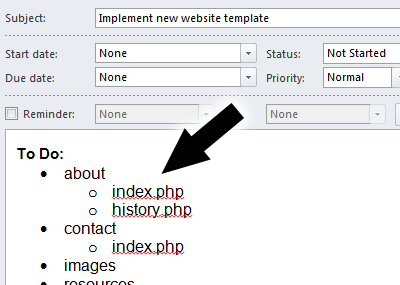
Figure 1. Bulleted List of Tasks
As sub-tasks are completed, I usually change the font color to a light gray (see Figure 2) and apply a strikethrough (see Figure 3).
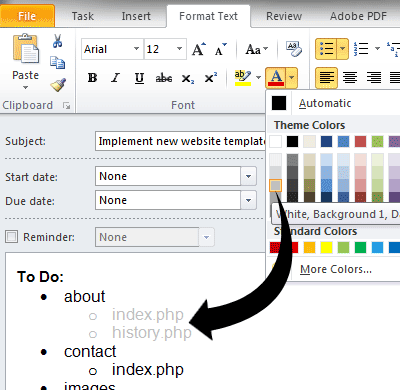
Figure 2. Changing Font Color
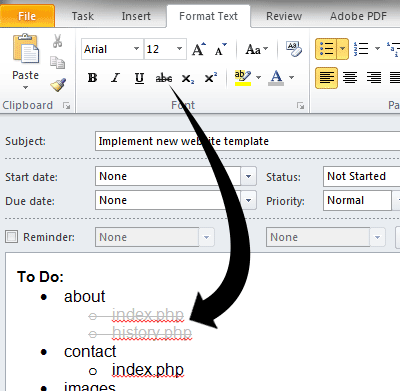
Figure 3. Adding a Strikethrough
Embed Emails
One of my favorite features of Outlook tasks is the ability to store email messages within the task description. You just need to drag the message(s) into the task window (see Figure 4).
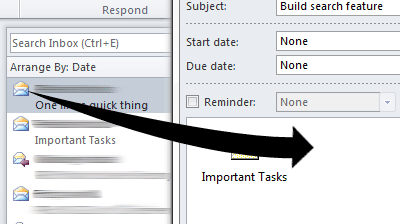
Figure 4. Dragging Emails
So if you have several email messages that describe different aspects of a task, you can store them together. No more needing to remember where the emails are stored or searching through dozens or hundreds of messages trying to find what you are looking for.
Embed Files
In addition to email messages, other files like Microsoft Word documents can be embedded into the task description. You just need to drag them into the task window (see Figure 5).
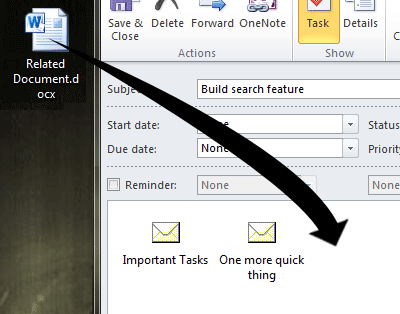
Figure 5. Dragging Files from the Desktop
Email attachments can also be included in the task description. Instead of dragging the entire email message, you can drag individual attachments (see Figure 6).
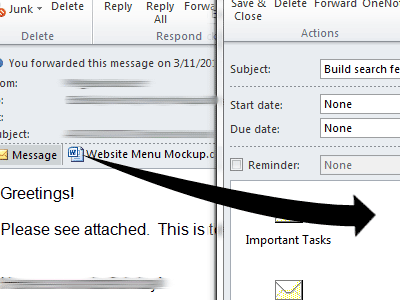
Figure 6. Dragging Email Attachments
Final Thoughts
Now there are many other things that you can do with tasks in Outlook. You can specify a deadline for the task; indicate if the task is of high, normal, or low importance; etc. You can even have Outlook remind you about the task so it stays on track.
Related Posts
- Store Task Emails in Microsoft Outlook Data Files
- Streamline Process for Flagging Emails as Tasks in Microsoft Outlook
- Manage Tasks in Outlook: Flag Emails as Tasks Before They Get Lost in the Sent Mail Folder
- Manage Tasks in Outlook: Create Customizable Tasks
- Manage Tasks in Outlook: Flagging Emails as Tasks
- Manage Tasks in Outlook: Categorizing Tasks


0 Comments
There are currently no comments.
Leave a Comment